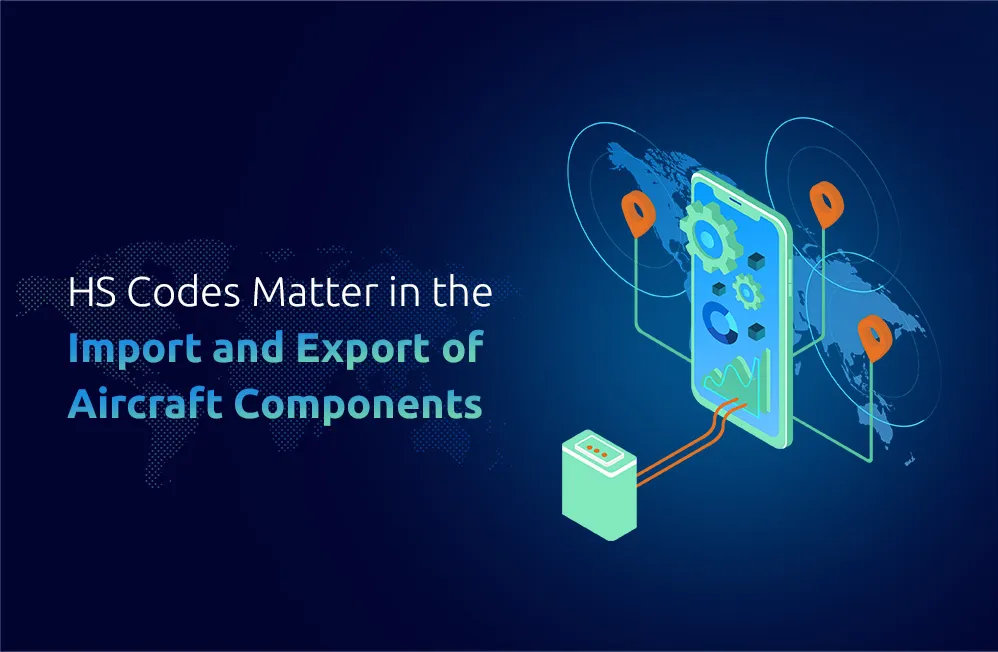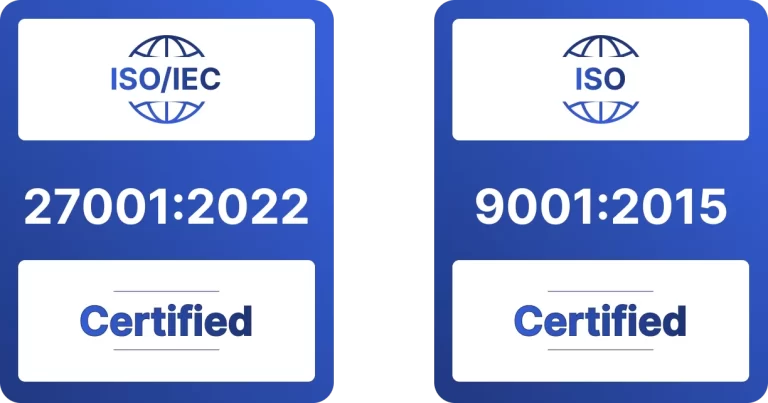Insight
International trade requires a full comprehension of Harmonized System (HS) codes, which play an important role in the effective conduct of importers and exporters of their businesses. The customs simplification system through HS codes enables efficient international trade, particularly for the aerospace industry. The following blog investigates HS code effects on aircraft component imports and exports and their vital role in maintaining compliance standards and supply chain operations.
What Are HS Codes?
Each traded product receives classification through internationally standardized numerical codes called Harmonized System/HS codes. Global market identification depends on HS codes, which help both international shipping and the proper enforcement of tariffs and laws regarding duties and taxes. As an essential element of worldwide commercial frameworks, the World Customs Organization (WCO) created the HS code system. Over 5,000 products receive classification under HS codes to increase both transparency and efficient operation of trade.
How You Use the HS Code in Aircraft Component Trade
The import & export activities rely on HS codes used for aircraft components. The correct calculation of customs duties, seamless customs clearance, and efficient logistics depend on these HS codes, as well as their ability to prevent customs delays. The following points describe essential HS code functions during aerospace parts import or export operations.
Why HS Codes Matter in the Import of Aircraft Components
The correct HS code selection while importing aircraft components brings several benefits to the process. Customs authorities rely on the HS codes to determine import duties & taxes. However, assigning wrong codes leads to payment problems that might cause clearance interruptions and financial penalties. Each aircraft component belongs to a particular HS code designation that enables customs departments to determine proper tariff rates. However, favorable trade agreements such as the GSP present opportunities for countries to enjoy reduced duties.
The accurate use of HS codes improves logistic operations because it ensures efficient transport by airfreight, sea freight, & land transportation systems. Using the correct HS code enables complete compliance with national & international trade regulations because misclassification could result in trade violations that may prevent shipment access to certain countries.
HS Codes Used for Exporting Aerospace Components
For exporting aircraft components, HS codes are equally important. They ensure that export transactions are smooth, lawful, & in line with the importing country’s regulations.
Here’s how they benefit the export process:
Duty-free Shipments: Exporters need the correct HS code to access duty-free shipping and trade agreements through Delivery Duty Paid because they can avoid customs duties.
Trade Agreement Facilitation: Trade Agreement Facilitation: Aerospace component exporters who master HS codes for their shipments can utilize trade agreements to maximize their benefits. Products bearing particular HS codes can take advantage of tariff reductions or exemptions during the execution of the accords, including the European Union’s free trade policies.
Regulatory Compliance: International standards that the export must meet become possible due to correct HS code usage; therefore, exports remain free from delays or blockages. Exporters must pay close attention to HS coding, especially with aircraft components, since these parts must adhere to exacting safety and quality standards.
Export Documentation: The HS classification must be precise on all export paperwork, including export registers and invoices. The consequence of misclassified goods is both document rejection and clearance processes.
Key Considerations for HS Code Use in the Aerospace Sector
HS Code List: The HS code list, which applies to the aerospace industry, requires consultation by both exporters and importers to determine proper identification for their aircraft components and parts. An HS code list appropriately groups aerospace components from engines to fuselage sections and avionic parts.
HS Tariff Code: The HS Tariff Code assigns aircraft components unique codes that depend on their structural purpose while considering their material construction. Agencies and governments use the HS tariff code to apply identical tariffs between different countries, leading to changes in the costs of imported/exported goods.
Compliance and Documentation: Customs compliance requires proper documentation. Using an incorrect HS code leads to investigation penalties, financial fines, and delivery delays. To achieve compliance, correct documentation must include accurate information in invoice packing lists and certificates of origin.
Logistics and White Glove Shipping: Specialized white glove shipping capabilities and dedicated logistics solutions must be used to manage the supply chain needs of aerospace components. Using proper HS coding helps select proper logistics services, decreasing transportation risks and handling difficulties during shipment.
Conclusion
Aircraft component import and export operations need HS codes to run efficient global trade alongside compliance standards and achieve the lowest possible costs. The proper HS classification methods enable aerospace startups to operate effectively in international business without encountering marketplace delays. HS codes help One Union Solutions enhance clients’ overseas operations by facilitating regulatory compliance throughout their international trade activities.
Did You Know?
The World Trade Organization reports that aerospace products and components have grown substantially. The world exported aircraft and spacecraft parts to over $100 billion . The correct selection of HS codes allows companies to meet international shipping requirements, resulting in better transactions and decreased chances of delivery delays.
Frequently Asked Questions
- What is an HS code, and how does it affect aircraft component exports?
Ans: The standardized international product identification system, the HS code, helps classify trade products worldwide. These codes, which classify aircraft components, serve to establish tariffs while verifying compliance and speeding up import-export activities.
- Do HS codes impact their total costs when importing aircraft components?
Ans: The HS code directly affects the applied import tariffs and duties. When an industrial component receives incorrect classification by trading authorities, higher duties are used, increasing customer delivered price.
- What role do HS codes play in enabling international trade operations in aerospace industries?
Ans: International shipping performs more efficiently when countries adopt HS codes because they create standard international goods classifications. The correct duties are applied through these codes, delays are prevented, and customs compliance requirements become achievable.
- How should I identify the suitable HS code for aerospace components?
Ans: The HS code list is accessible through customs authorities and specific industry databases. Customs brokers and trade experts, alongside their consultation, can assist in determining appropriate codes.
- How should the importer of record operate when they have to apply HS codes?
Ans: Importers carry out three vital responsibilities to treat goods properly: correct classification duties, pay tax obligations and maintain regulatory compliance. The role is a fundamental factor in preventing customs violations and delaying shipments.












